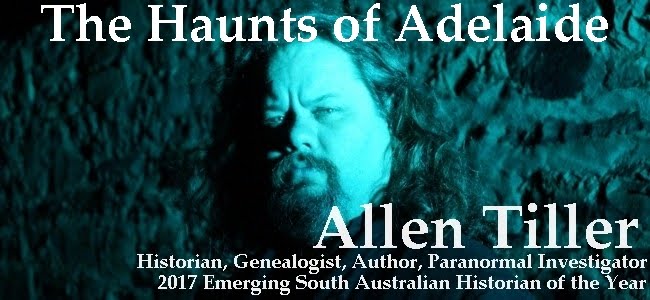A Ghost in Thebarton
In June 1906 The Register Newspaper of South Australia
reported a number of disturbances of ghostly vision seen in the suburb of
Thebarton. The ghost was described as
being dressed in a luminous white gown, and having in his hand a coffin like
device which displayed a number of Bible scriptures and semi-scriptures.
On Friday the 15th
of June 1906, a man called in to the Thebarton Police Station in a state of
panic, having just witnessed the ghost.
The victim was riding
a bicycle down Henley Beach road, and in his efforts to escape the clutches of
the ghost, almost drowned in an invert at the intersection of Henley Beach road
and Taylors Road.
On Saturday night a young lady witnessed the same spectre in
the street as she made her way home.
The rumour of the
ghostly sightings spread very quickly around the region, and many people became
afraid to venture outside, so much so, that a circus that was nearby watched
its patronage numbers drop considerably as the reported ghostly sightings went
up.
As the fear spread, a
wave of anger began to sweep through the area’s young men, who took to the
street, vowing to find the ghost and teach it a lesson - which would have been
an interesting fight if the ghost was indeed a real one!
As citizens tried to
rationalise the ghost appearance, a skeptical group arose that stated that the
ghost was nothing more than the weak minds of the “victims” creating the
phantom – but police soon dismissed this, as the original few reports that had
not been made public, had almost identical descriptions of the ghost.
Instead, the police began to undertake a little ghost
hunting themselves to try and find the young man they thought was responsible…
The ghost disappeared into the ether, and was never heard of
again!




